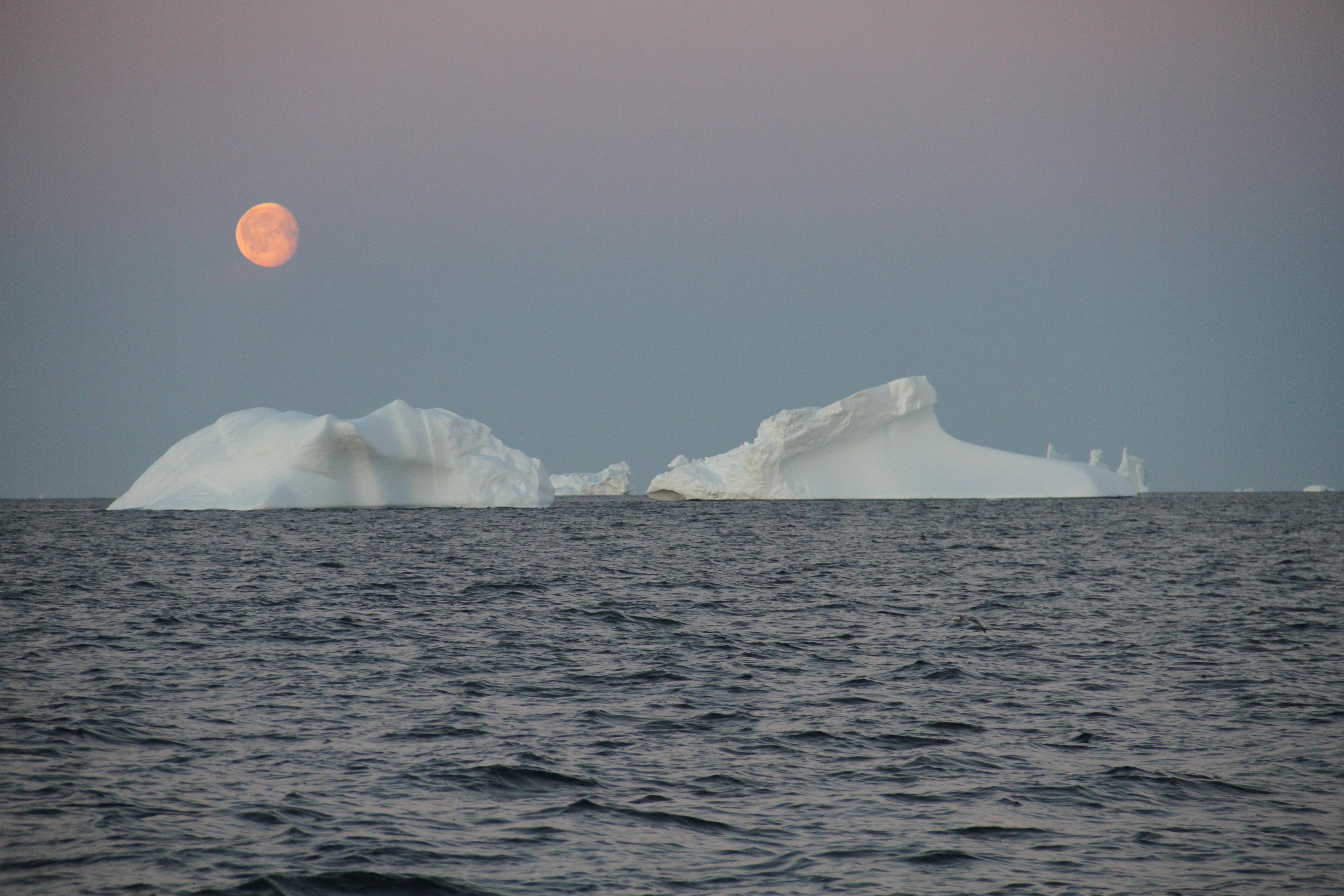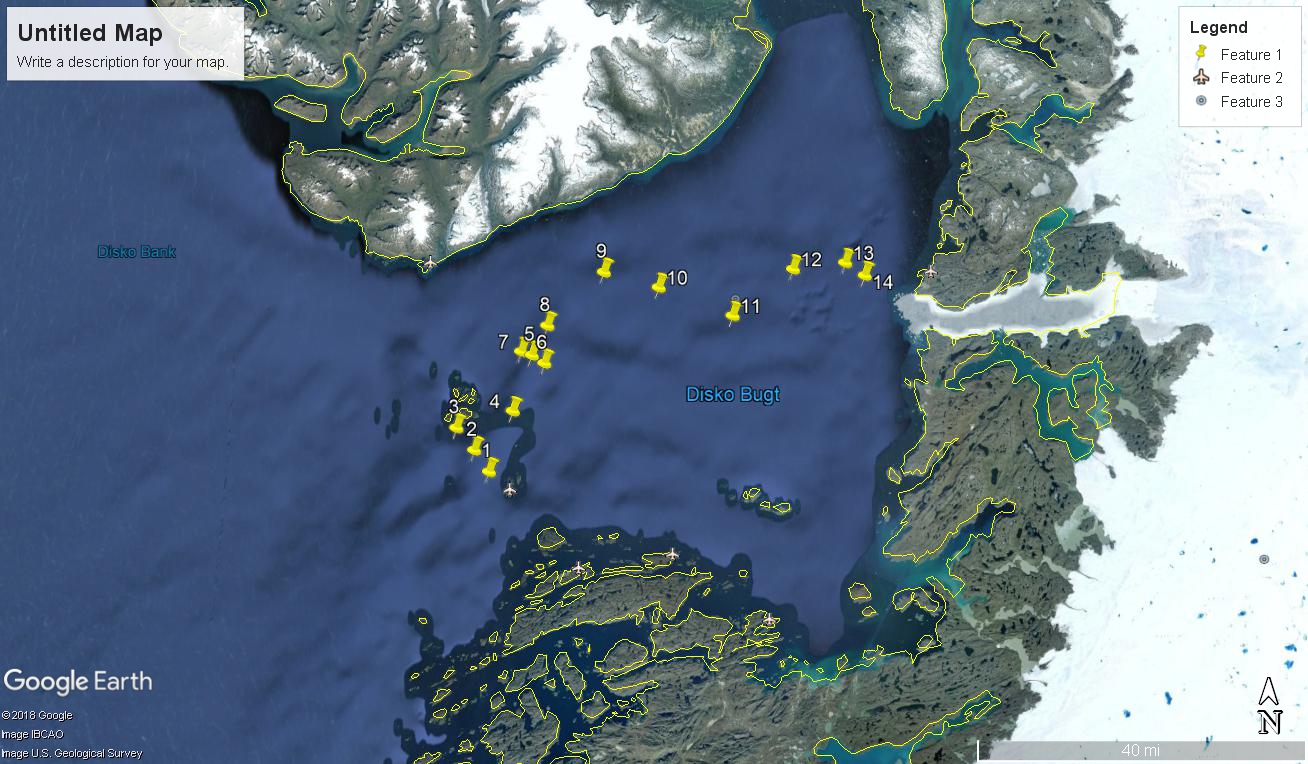 Matt and I made it to Aasiaat, Greenland. A small town of about 3,000 people. It sits at the edge of Western Greenland marking the southern corner of Disko bay. In that bay is a famous glacier called Jakobshavn Glacier. It is reported to be melting at an incredible rate with a massive mix of icebergs and glacial ice trailing offshore. It is also known to calve off icebergs the size of New York City!
Matt and I made it to Aasiaat, Greenland. A small town of about 3,000 people. It sits at the edge of Western Greenland marking the southern corner of Disko bay. In that bay is a famous glacier called Jakobshavn Glacier. It is reported to be melting at an incredible rate with a massive mix of icebergs and glacial ice trailing offshore. It is also known to calve off icebergs the size of New York City!

Life onboard the Toboggan is quite nice. My cabin is in the stern of the boat (the back end) and I have plenty of cabinets underneath and to the side of my bunk for my clothes, books, electronics and some chocolate bars. Keeping your stuff from getting dirty or becoming tiny missiles ready to launch at any point can be a real trick on a moving boat. Everything must be secured. You may be familiar with the rolling motion of a boat in the ocean but there are four other inertial motion forces a boat and you face underway: that up and down motion is heave-worthy, a pitching motion that alternatives pointing your bow (front end) up then stern in called pitch, then you have an alternating twisting motion called yaw. Boats, planes and drones all experience these motions, and believe me its enough to test your stomach. But these forces are important to consider when installing, operating and analyzing scientific instruments and their data.

Once we arrived in to Greenland and boarded the Toboggan it was time to test and prepare our instruments before leaving the harbor. It is always a scramble! A good blow was going to pass through so Matt, Kyle, Garrett and I decided to stick it out here in tow, delay a day or two and make some friends. Nivi first recalled seeing me poking around her shop and eating a hot dog. Tsk Tsk! Later on she told me I was not allowed to do that. She was funny and speaks perfect English due to her enjoyment of American movies. After an insane amount of prep work, which entailed marking out every 24-feet of a 3,000-foot line that will be used to assess the physical properties such as temperature and salinity once near glaciers, I had a chance to meet Nivi. Nivi loves her dog Felix and just had to introduce me to him, his girlfriend and his puppies. We walked over to the edge of the graveyard where they lived on rocks outside. These dogs love the cold and living outside year-round; summer is a bummer for them. Covered in mosquitoes, Nivi and I played with the dog family and I was in doggy heaven. If Felix stood up he was as tall as I am. He was the happiest sled dog I have ever seen.



Meanwhile, the crew was getting antsy so after a last shower in the Seamanshouse and at the first chance we got we untied the lines and sailed into blue skies and a land of icebergs. Like art, each one is a marvel. You just cant get bored looking at them and the herds of seals that dot the seas. Sunshine quickly turned to heavy fog which made accomplishing our first research goal a major hurdle. In 2015 and 2016 Matt and I mapped out the seafloor in much of NW Greenland and traced the warm deep current coming up from the Atlantic that is influencing the melt rate of Greenland’s glaciers. The NASA Jet Propulsion Lab Ocean Melting Greenland team is not finished assessing this phenomena and had their eye on the varying strength of that warm water current that pierces through Disko Bay and is a factor in melting Jakobshavn Glacier. In teams of two and in a notch above idle for about 48 hours straight, we slowly made our way towards the glacier’s face. And with our CTD instrument, which measures conductivity, temperature and depth, we indeed found that warm water. In the fog, we could hear icebergs exploding in the distance and confident Intuit ship drivers zipping through the ice maze. At least we know the ice in Baffin Bay is melting which is partly the reason for all the fog.

Now we are in Upernavik, a good 300 miles north and to our amazement found a place that had internet I could pay for to check ice charts, weather and update your all as we gear up for crossing Baffin Bay. A bay that will take us about 4 days to cross before we arrive to the Northwest Passage and begin the bulk of our scientific discovery and challenging navigation.
Until then~ Nicole


